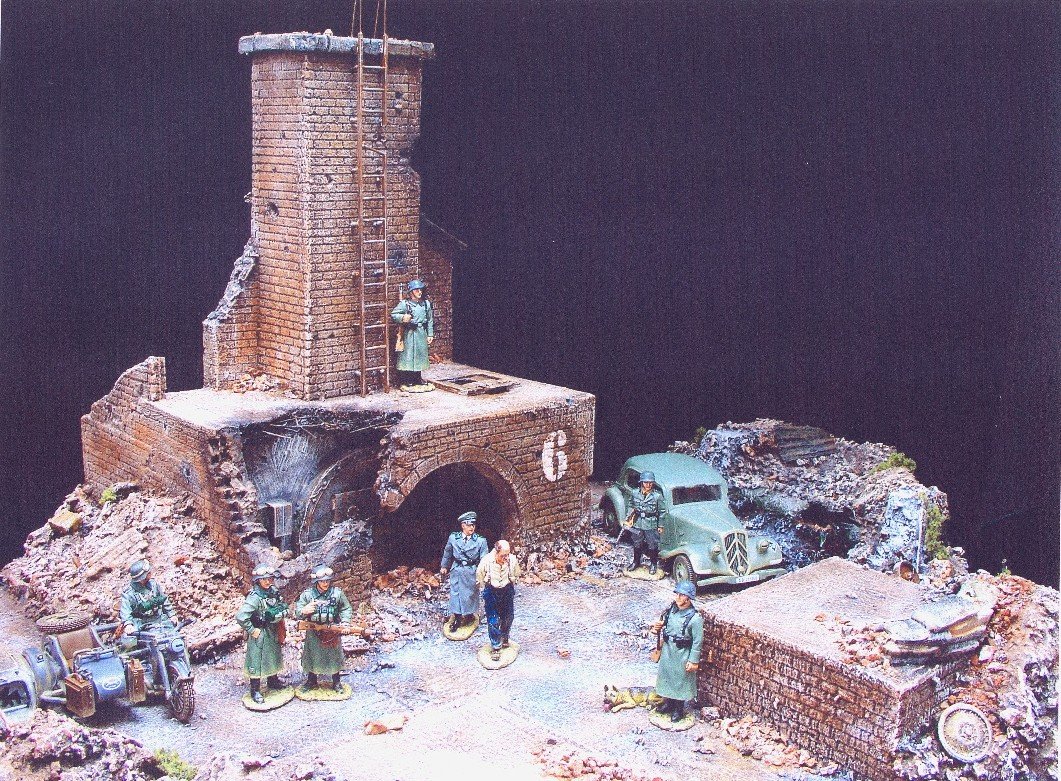I remember a post made by one Marc Thorson on another forum, many years ago, that stuck with me. He broadly divided dios in to two types (my interpretation as to what was said).
The first type is to try and create an utterly realistic scene, something that a rnadom photo of a battle might capture. Loads of grit and realism, lacking in colour, not necessarily pleasing to the eye. Figures, vehicles or whatever may weell blend in to the background. It may be that nothing particular focus's the eye, much like you would get in reality.
The second type is a dio that is purposely designed to showcase the figures / vehicles. The focus should be drawn to the objects positioned on the dio, rather than the construction of the scenic element itself. The dio will therefore in all probablilty, sacrifice just a touch or reality, to ensure that the figures and vehicles can be displayed most effectively. So for instance, heavy use of fairly uncluttered roads, countryside and rural landscaping with plenty of 'flat' areas to position figures, trees, urban debris carefully positioned, rather than randomly scattered, so that the main focus can be clearly seen.
I can appreciate both, and I don't think either type is any easier or harder than the other to construct, and both types can demonstrate hugely talented creations but some collectors may be drawn to a favoured style.
With Gordon's dios, I would expect that there is the intention to show off the products, whilst still creating an amazing scene. They get my thumbs up.
Wow. Marc T's words must have sunk in for me to remember all that. Normal Monty Pythonesque service will be resumed shortly. {sm2}
Simon


